I embarked on a transformative journey in the heart of the serene Himalayas, where the air is crisp, and the mountains echo with ancient wisdom. It would be a perfect start to this post. I never went to the Himalayas, but I unravel the profound connection between yoga and the breath. Breathing is the very essence of life, the first thing we do when we enter this world and the last thing we do when we depart. As I immersed myself in the practice, I discovered the fantastic world within yoga: pranayama, the art of breath control.
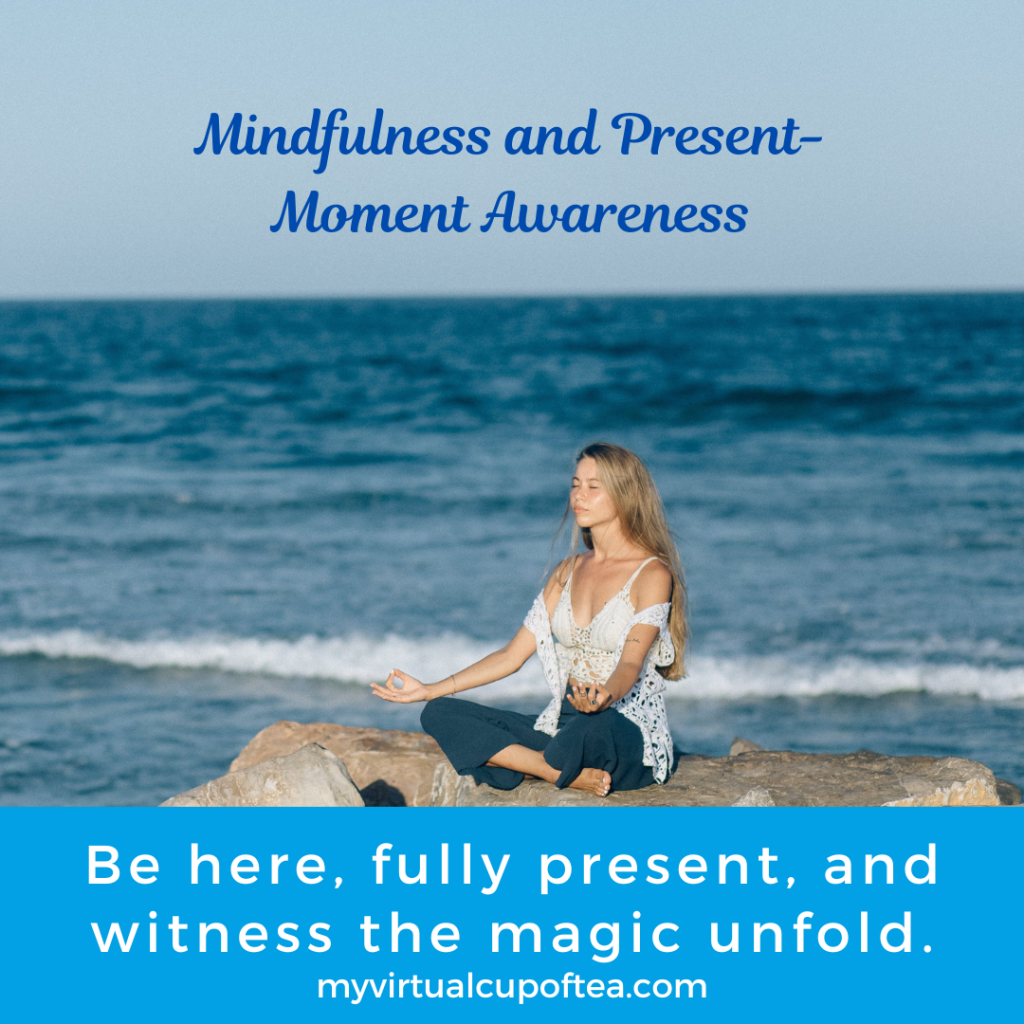
Picture this: A misty morning, the sun gently kissing the tops of the pine trees as I unrolled my yoga mat (in my garden). This day began a profound connection with my breath, a connection that would breathe life into my yoga practice.
**This post contains affiliate links and I will be compensated if you make a purchase after clicking on my links with no extra cost for you.
The Symphony of Breath and Movement
Yoga, in its essence, is a pervasion between breath and movement. The breath deepens the rhythm of every asana, infusing life and vitality into the practice. Asanas, or yoga postures, are the vessels, but the breath animates them, turning the physical into the spiritual. While following the path of my yoga journey, I discovered the ancient teachings of pranayama. It was described as the gateway to the soul—a pathway to empower the life force within each breath.
Yoga Alchemy: The Two Tools with Mark MorfordThe Breath as a Guide
As I sat cross-legged, eyes closed and hands resting on my knees, I embarked on a journey of breath awareness. Inhale, exhale—a simple yet profound rhythm that became my guide. I learned that pranayama is not just about the breath; it’s about understanding the subtleties of each inhalation and exhalation.
Imagine your breath as a gentle tide, flowing with the universe’s rhythm. Through pranayama, I discovered that conscious breathing is a powerful tool to calm the mind, reduce stress, and enhance overall well-being. It’s the bridge that unites yoga’s physical and spiritual aspects.

Breathing Exercises to Elevate Your Practice
There are many Pranayama Techniques. Here are three simple yet transformative pranayama exercises which I practice.
- Dirga Pranayama(The Three-Part Breath): Begin by sitting comfortably. The full yogic breath, or the three-part breath, starts from the first position in the low belly (diaphragm just below the belly button), the second position is the chest (feel your lungs fill with air), and the third position is the throat (just above the top of the sternum). The breath is continuous, inhaled and exhaled through the nose. The inhalation starts in the first position, the belly, then moves to the second position, the lungs, and then to the third position, the throat. The exhalation starts in the throat, carries to the lungs, and finishes in the belly – diaphragm. This exercise grounds you in the present moment, promoting relaxation and focus.
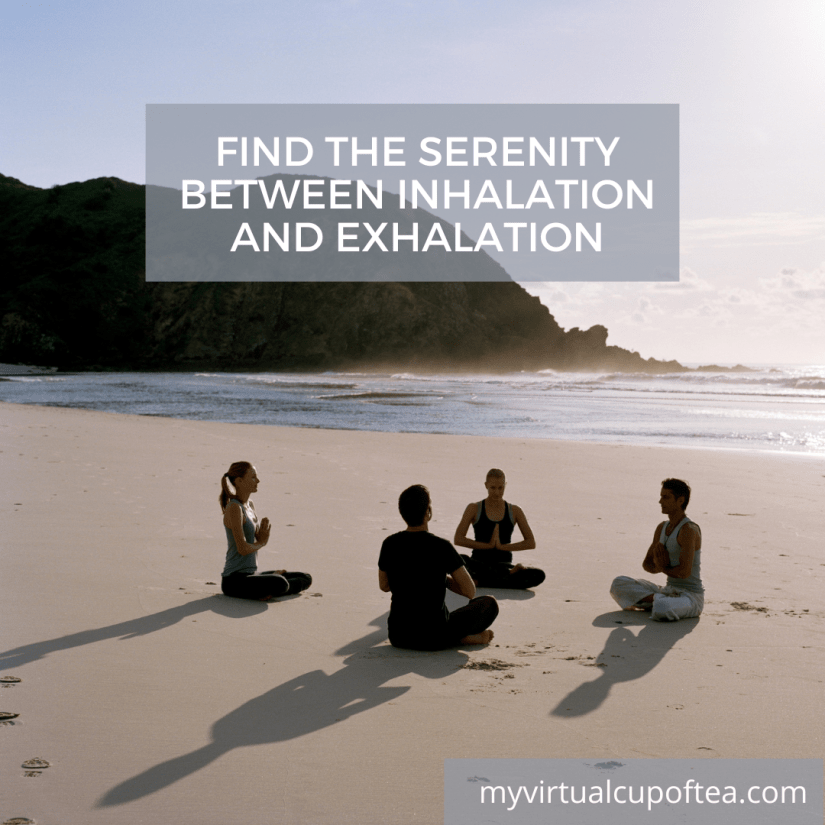
- Nadi Shodhana (Alternate Nostril Breathing): Sit with a straight spine. Using your right thumb, close off your right nostril and inhale deeply through the left nostril. Close the left nostril with your right ring finger, release the right nostril, and exhale. It should be effortless. Continue this pattern, alternating nostrils, inhale on the right nostril and exhale on the left nostril. After 3-5 minutes, release your nostrils and breathe normally a few times. Then, start the second part by closing off your left nostril and inhaling deeply through the right nostril, and slowly, without effort, exhale through your left nostril and repeat, alternating nostrils. Nadi Shodhana balances the energy flow in the body and clears the mind.
- Bhramari (Buzzing Bee): The name itself resonates with the essence of a buzzing bee—a creature revered in Indian tradition for its dynamic nature and the soothing hum it carries. Inhale slightly deeper than normal, close both ears and hum like a bee during exhalation. Take ten deep breaths in this manner and then another ten. There’s a certain magic in the resonance of the bee’s buzz. It’s not just a sound; it’s a vibration that permeates your entire being. For me, the simplicity of a Bhramari Pranayama practice lies in its accessibility. No complex postures or intricate techniques—just the gentle act of humming like a bee, with each exhale extending into a single, continuous tone. It’s a melody that connects you to the primal energy within.
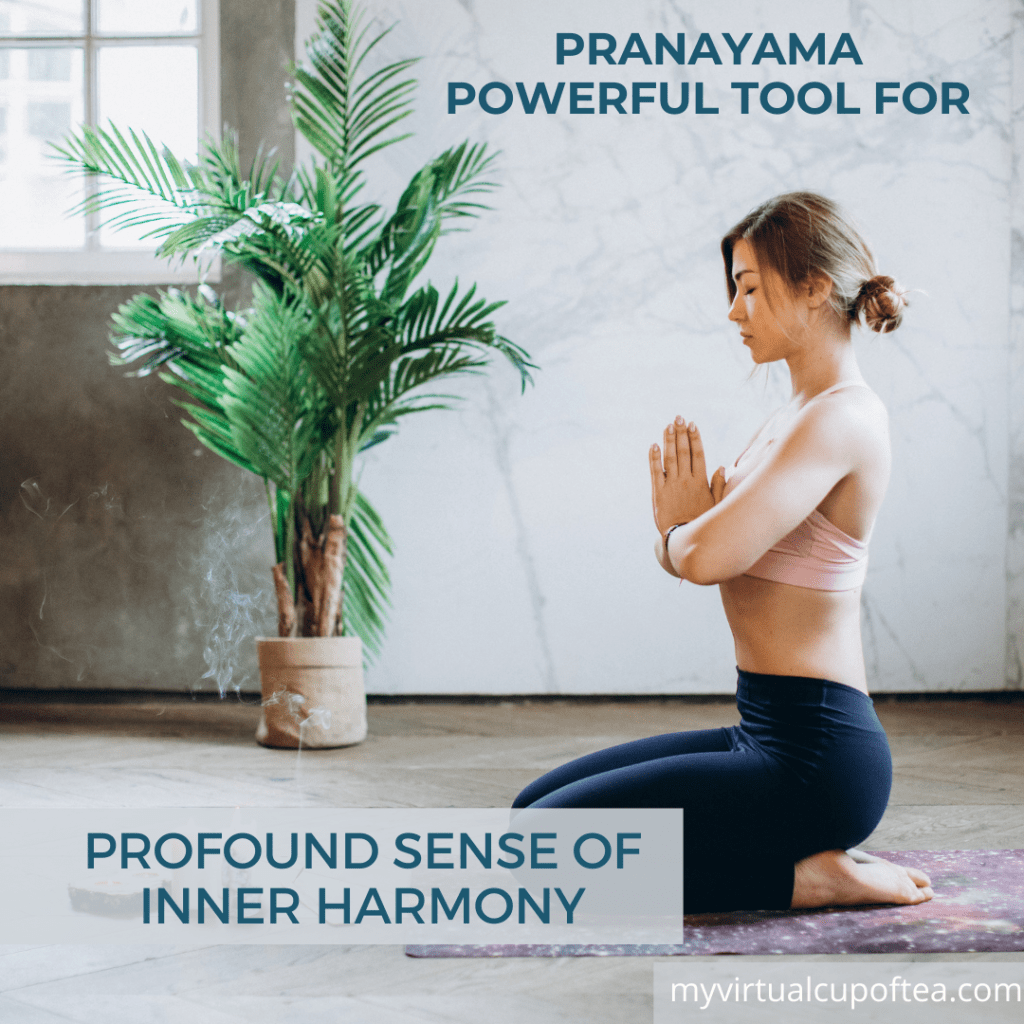
The benefits of pranayama and how it can enhance overall well-being
As I navigated the currents of breath control, I discovered the benefits extending far beyond the yoga mat’s confines. Meaning of Pranayama: Prana – life force, breath; Yama – control, restraint, regulation. Prana is the essence of life everywhere, and breathing techniques are just a way to pull energy through our body and mind.

Harmony of Mind and Body: In the bustling chaos of everyday life, the mind often resembles a turbulent sea, tossing and turning with the waves of stress and anxiety. Pranayama, like a skilled navigator, guides the mind to calmer shores. Through mindful breath control, I found the serenity between inhalation and exhalation that filled my whole being. Once a storm, the mind transformed into a serene lake, reflecting the clarity within.
Stress Reduction: Life’s everyday responsibilities can sometimes feel like a walk on the edge. The weight of deadlines, expectations, and unforeseen challenges creates tension that lodges itself in the body and mind. It was during a particularly demanding period that pranayama emerged as my sanctuary. The slow, deliberate breaths became a lifeline, a release valve for pent-up stress.
Enhanced Respiratory Function: As I explored pranayama, I became aware of the transformative power of conscious breathing. Diaphragmatic breathing, in particular, expanded the canvas of my lungs, inviting in a fresh gust of vitality with each inhale. Heightened respiratory awareness improved lung capacity and oxygenated every cell, infusing my body with newfound energy. With each breath, I felt a reinvigoration—a cellular dance of renewal.

Mindfulness and Present-Moment Awareness: In a world that often propels us into the past or catapults us into an uncertain future, pranayama grounds us in the present moment. Nadi Shodhana, or alternate nostril breathing, became my passage to the now. With each deliberate inhalation and exhalation, I discovered the magic of mindfulness—the ability to savour each breath and sensation without the burden of yesterday’s regrets or tomorrow’s uncertainties.
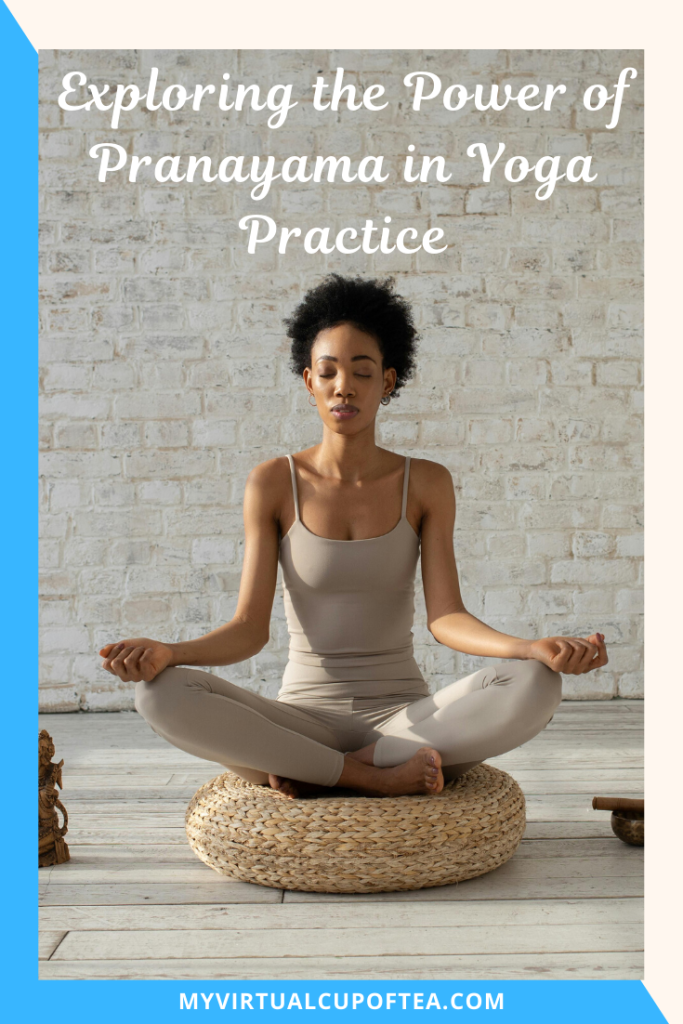
Balanced Energy Flow: Yoga philosophy, the concept of prana—life force energy—holds a significant place. Through pranayama, I learned to navigate the currents of prana, ensuring a balanced flow throughout the body’s subtle energy channels. Nadi Shodhana, with its gentle ebb and flow, became a conductor harmonizing the energies within. The result? A sense of vitality and equilibrium that transcended the physical and permeated the spiritual.
Improved Focus and Mental Clarity: As a writer, clarity of thought and focus are my artistic tools. Pranayama, however, elevated these tools to a new level. The deliberate nature of breath control exercises, like Dirga Pranayama – the full yogic breath acted as a mental reset button. With each breath, I felt the fog lifting from my mind and leaving clarity. It was as if the breath whispered, “Be here, fully present, and witness the magic unfold.”
Emotional Resilience: Like a roller coaster, life’s journey has highs and lows. Pranayama became my emotional anchor—a steady companion during turbulent times. The benefits of Bhramari Pranayama extend far beyond the auditory experience. The hum acts as a balm for the nervous system, soothing frayed edges and inviting a sense of calm. It’s a gentle reminder that a powerful tool for self-care and inner peace lies within the simple act of humming.

A Breath of Gratitude
As I reflect on the journey that brought me to the doorstep of pranayama, it is empowering to encourage the mind to rest its awareness on the present moment. Once a mere physiological process, the breath has become a magic companion on my yogic path. Through pranayama, I’ve tapped into a wellspring of peace, flexibility, and joy that transcends the mat and affects every aspect of my life.
If you choose to start your yoga and pranayama journey, remember that the breath is more than just air filling your lungs. It’s the bridge that connects you to the essence of life itself. Inhale deeply, exhale slowly and let the symphony of breath and movement guide you to a place of inner harmony and profound self-discovery. Namaste.

Feel better in comfortable and natural fabrics for clothes.
8 motives to start practising Yoga
Myvirtualcupoftea.com is a participant in the Amazon Services LLC Associates Program, an affiliate advertising program designed to provide a means for sites to earn advertising fees by advertising and linking to Amazon.com and affiliated sites. This post might also contain affiliate links to other sites. And if you purchase anything using these links, I earn a little commission with no extra costs for you. Thank you for supporting my blog!
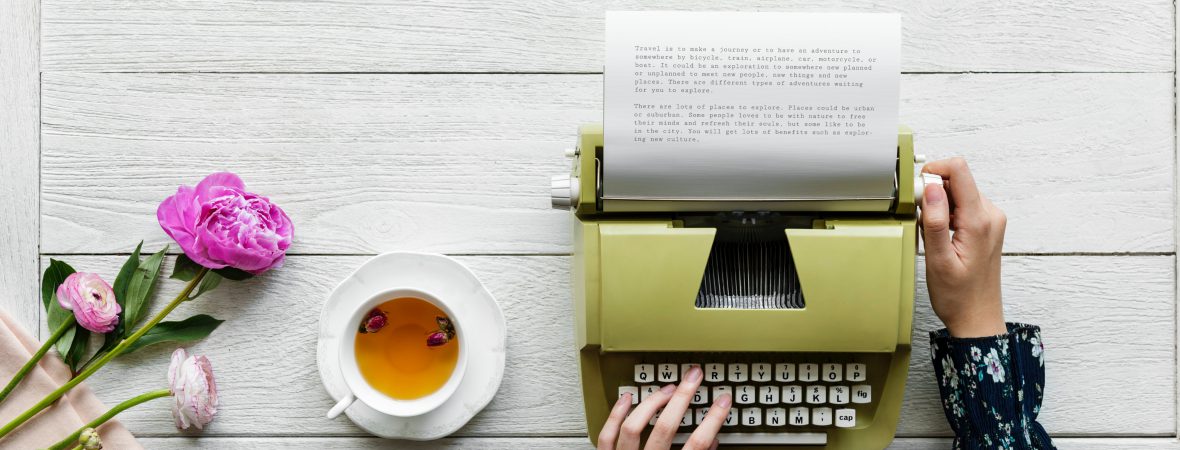


5 thoughts on “Unlock Inner Serenity: Exploring the Power of Pranayama in Yoga Practice”
Comments are closed.